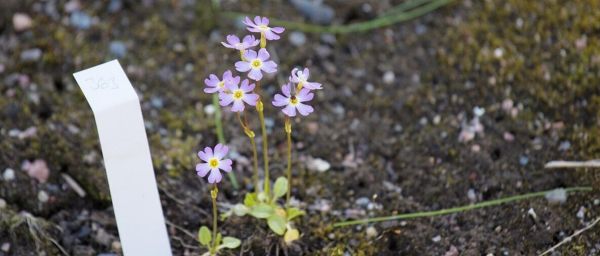Global warming already affects Siberian primrose, a plant species that is threatened in Finland and Norway. According to a recently completed study, individuals of Siberian primrose originating in the Finnish coast on the Bothnian Bay currently fare better in northern Norway than in their home area. The results indicate that the species may not be able to adapt to quickly progressing climate change, which could potentially lead to its extinction.
Siberian primrose, a species protected under the Habitats Directive of the European Union, spread northward from southern areas to the current Bothnian Bay as well as, through another route, to northern Norway with the gradually receding ice after the Ice Age. Compared to today, the warming of the climate was very slow at the time.
“Siberian primrose is specialised in growing on seashore meadows with low vegetation, which in Finland are formed by the post-glacial isostatic rebound. The species benefits from the lack of strong competitors and grazing that keeps the vegetation low,” says Marko Hyvärinen, director of the Botany Unit of the Finnish Museum of Natural History, University of Helsinki.
In 2013, researchers at the Universities of Helsinki and Oulu planted both the Norwegian and Finnish varieties (Primula nutans ssubp. finmarchicha var. finmarchica and var. jokelae) at five different botanic gardens: in their home environments in Svanvik, northern Norway, and in Oulu, northern Finland, as well as in Rauma and Helsinki further south in Finland and in Tartu, Estonia.
Read more at University of Helsinki
Image: Siberian primrose, Primula nutans subsp. finmarchica (Photo Credit: Marko Hyvärinen)


